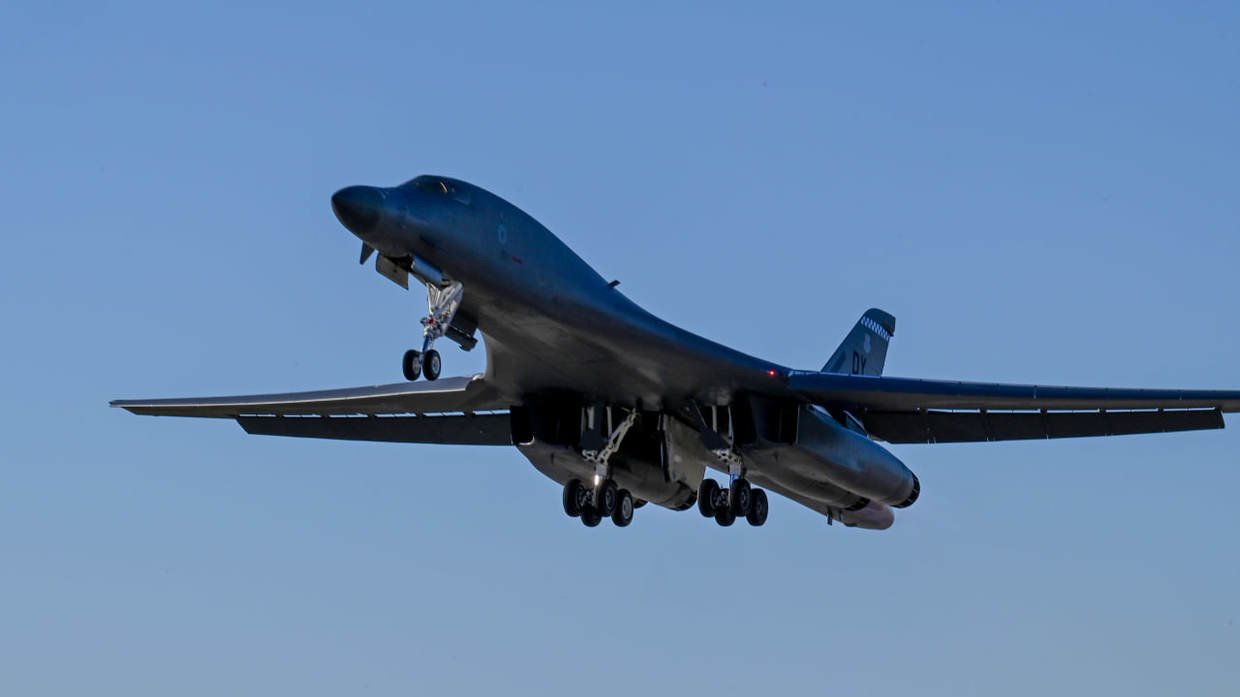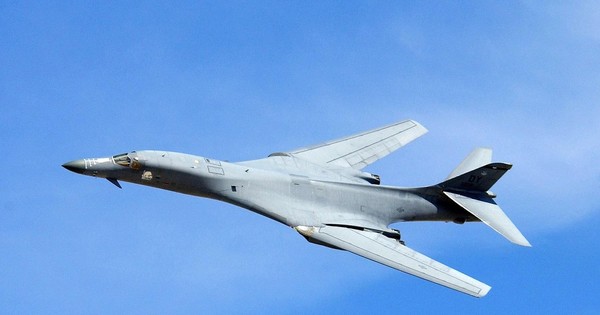The B-1B Lancer, known by its crews as “The Bone,” is one of the most formidable bombers in the U.S. Air Force’s arsenal. Developed during the Cold War, the B-1B is a long-range, multi-role bomber capable of delivering massive payloads at supersonic speeds. With its sleek, swept-wing design and ability to fly at low altitudes to avoid enemy radar, the B-1B Lancer has become a critical component in America’s global strike capabilities.

Cold War Origins and Modernization
The B-1 program was born out of the need for a high-speed, long-range bomber to counter the Soviet Union’s advanced air defenses during the Cold War. Initially, the B-1A prototype was developed in the 1970s but faced delays due to budget constraints and changing military strategies. It wasn’t until the Reagan administration that the B-1B variant was finalized and entered service in 1986.
While originally designed for nuclear missions, the B-1B’s role has evolved to become a conventional powerhouse. In 1995, its nuclear capabilities were stripped in compliance with arms control agreements, allowing the aircraft to focus solely on conventional bombing operations. Its ability to carry both precision-guided and unguided munitions makes it one of the most versatile bombers in the Air Force.

Stealth and Supersonic Speed
The B-1B Lancer stands out for its combination of speed, stealth, and payload capacity. It can fly at speeds of Mach 1.25 (about 950 mph) at high altitudes, allowing it to reach targets quickly and evade threats. Its variable-sweep wings give it excellent handling at both high and low speeds, enabling the bomber to operate in a wide range of mission profiles.
The B-1B’s low radar cross-section, combined with its ability to fly at low altitudes and hug the terrain, makes it difficult to detect on enemy radar. This capability allows it to penetrate heavily defended areas and deliver its payload with precision.
Massive Payload Capacity
One of the B-1B’s most impressive features is its massive payload capacity. The aircraft can carry up to 75,000 pounds of ordnance, including a variety of bombs and missiles. It is equipped to carry Joint Direct Attack Munitions (JDAM), laser-guided bombs, and cruise missiles, giving it the flexibility to engage a wide range of targets. This makes the Lancer an ideal platform for precision strikes, close air support, and interdiction missions.
During conflicts like the Gulf War, the war in Afghanistan, and operations in Iraq, the B-1B has been a key asset in delivering airstrikes with devastating accuracy. Its long range allows it to fly missions from bases far away from the conflict zone, such as those in the U.S. or allied nations, and still strike targets on the other side of the world.
Advanced Avionics and Upgrades
Despite its Cold War origins, the B-1B has undergone significant upgrades to remain relevant in modern warfare. The aircraft is equipped with advanced avionics, including radar systems for navigation and targeting. Modern upgrades have also enhanced the B-1B’s communication and data-sharing capabilities, allowing it to work seamlessly with other aircraft and ground forces.
The U.S. Air Force has invested in the modernization of the B-1B, ensuring it remains a critical asset in its fleet. Recent upgrades have focused on increasing the bomber’s ability to carry advanced munitions and improving its survivability in contested environments.
Combat Proven
The B-1B Lancer has seen extensive combat action since its deployment. It played a crucial role in Operation Desert Fox (1998), the wars in Afghanistan and Iraq, and various anti-ISIS operations. In each conflict, the bomber has demonstrated its ability to deliver precision strikes with overwhelming force, often flying long-duration missions to provide support to ground troops.
One of the B-1B’s standout capabilities is its ability to loiter over the battlefield, ready to strike when needed. This has made it a valuable asset in close air support roles, where timely and accurate airstrikes can turn the tide of battle for ground forces.
The Future of the B-1B
As the U.S. military continues to evolve, so too does the role of the B-1B Lancer. While plans are in place to eventually replace it with the next-generation B-21 Raider, the B-1B will remain a vital part of the U.S. Air Force’s bombing fleet for the foreseeable future. Its adaptability, speed, and heavy payload capacity ensure that it will continue to play a key role in global strike operations.
Conclusion
The B-1B Lancer has proven itself as one of the most versatile and powerful bombers in the world. From its Cold War origins to its role in modern-day conflicts, the Lancer remains a cornerstone of America’s long-range strike capabilities. With its supersonic speed, advanced avionics, and ability to carry massive payloads, the B-1B continues to dominate the skies, delivering precision strikes and supporting ground forces in critical missions around the globe.





